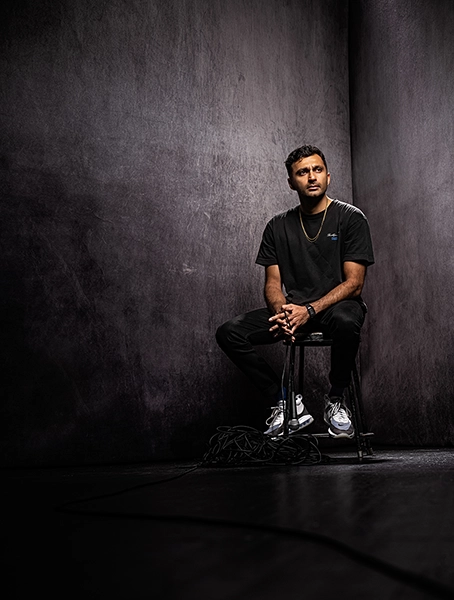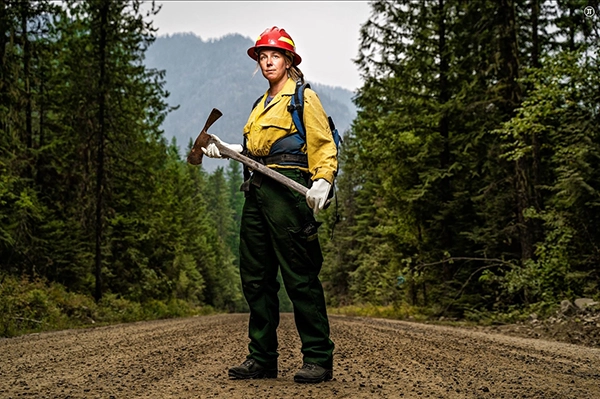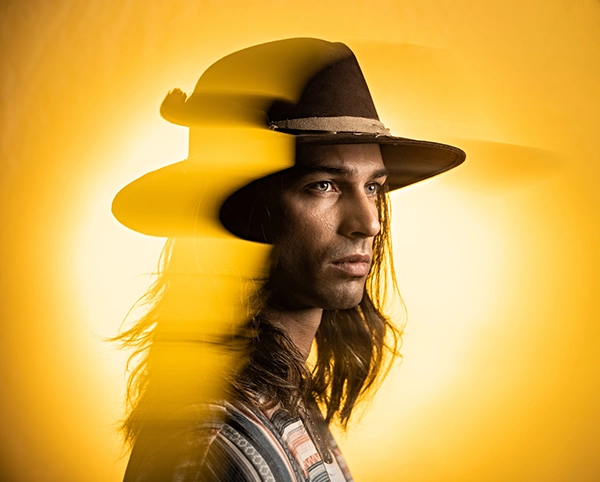Cinematic Shadows and Lights: Mastering Mood in Photography
More Photo Tips | Video Gallery | Photo Gallery | Enewsletter sign-up
Photography is entering a thrilling new era, with a dramatic shift toward cinematic aesthetics that's capturing the imagination of photographers worldwide. This vibrant trend breathes life into every frame, turning ordinary scenes into spectacular visual stories. This evolution isn't just about technique; it's about how the cinematic photography approach can weave a compelling narrative through the interplay of lighting and shadows in photography.
Let’s explore the art of using cinematic lighting for photography to transform simple photographs into scenes reminiscent of a film, learning how varied lighting styles can either dramatize or soften the visual tale we wish to tell.
Why Is Lighting Important in Photography?
Lighting shapes and defines our subjects, offering a spectrum of mood and emotion that can alter the entire feel of an image. In cinematic photography, lighting is decidedly narrative. It dictates the time of day, sets the scene’s mood, enhances textures, and even guides the viewer’s eye through the frame. It’s an indispensable tool in the creation of atmospheric depth and visual impact.
Take, for instance, the high contrast and deep shadows typical of noir films. This style, known for its bold blacks and stark whites, can add an element of mystery and drama to your images. Alternatively, consider the soft, diffused light often seen in romantic or historical pieces, where a gentler approach can evoke feelings of nostalgia or tranquility. Each lighting technique holds the potential to transform the mundane into the extraordinary, turning every moment into a narrative waiting to be unveiled.
Selecting the best lens for cinematic photography is crucial. Lenses that offer a wide aperture are ideal as they allow more light to enter, which is essential for capturing scenes in lower light conditions or for achieving that sought-after shallow depth of field. A lens with a focal length that mimics the human eye, typically around 50mm to 85mm, can also enhance the cinematic feel of your photographs by keeping the perspective natural and engaging.
Understanding how to manipulate light and shadow creatively is another cornerstone of cinematic imagery. Here are a few tips to harness the power of lighting effectively:
1. Use Hard Light for Drama: Utilizing hard light in photography can be a powerful technique for adding depth, contrast, and emotional impact to your black and white images. Unlike soft light, which produces gentle, diffused shadows, hard light creates sharp, well-defined shadows with strong contrasts between light and dark areas. This characteristic quality of hard light can be particularly effective in heightening drama and intensity within a scene. By strategically positioning a single light source, such as the sun or a spotlight, directly on the subject, photographers can create dramatic lighting effects that accentuate the mood and atmosphere of their images.

Click image to view larger
The stark contrast between illuminated areas and deep shadows adds visual interest and draws attention to the focal point of the composition. Furthermore, by maintaining a darker background, photographers can enhance the sense of isolation or focus on the subject, amplifying emotional tension and emphasizing the narrative power of the photograph. Whether capturing a decisive moment or conveying a strong mood, harnessing the dramatic potential of hard light allows photographers to infuse their black and white images with heightened visual impact and storytelling depth.
2. Soft Light for Subtlety: Soft light is a versatile lighting option in photography, offering a gentle, diffused quality that can enhance the subtleties and nuances of a scene. Unlike hard light, which produces sharp, well-defined shadows, soft light spreads evenly across a larger area, resulting in softer, more gradual transitions between light and shadow. This diffusion of light helps to minimize harsh contrasts and create a more flattering, natural-looking illumination, making it ideal for a variety of photographic subjects and styles.

Click image to view larger
One of the key advantages of soft light is its ability to evoke a sense of intimacy, vulnerability, or tranquility within an image. Whether capturing portraits, intimate scenes, or still life compositions, soft light can impart a soft, ethereal quality to the subject matter, enhancing its emotional resonance and inviting viewers into the scene. Additionally, the gentle quality of soft light can be particularly effective in highlighting delicate textures, subtle details, and intricate patterns, adding depth and dimension to the photograph. By harnessing the subtle beauty of soft light, photographers can create images that exude a sense of calmness, serenity, and quiet elegance, capturing moments of quiet introspection and emotional connection with finesse and sensitivity.
3. Experiment with Backlighting: Experimenting with backlighting offers photographers a creative opportunity to introduce an element of drama, mystery, and visual intrigue into their black and white images. Backlighting occurs when the primary source of illumination is positioned behind the subject, creating a striking contrast between the subject and the background. This technique can produce various effects, from creating a dramatic silhouette against a bright background to enveloping the subject in a soft, glowing halo of light. The resulting imagery often conveys a sense of ethereality, with the subject appearing to emerge from the darkness or bask in the luminous glow of the backlight.

Click image to view larger
Backlighting is particularly effective in emphasizing the form, contours, and outlines of the subject, as the light highlights the edges and shapes with a captivating luminosity. This technique is well-suited for a wide range of subjects, including portraits, landscapes, and still life compositions, offering photographers ample opportunities for creative expression and experimentation. By harnessing the power of backlighting, photographers can infuse their black and white images with a sense of mystery, elegance, and visual allure, elevating the overall impact and storytelling potential of their photographs.
4. Color Temperature Matters: Understanding and manipulating color temperature is a fundamental aspect of crafting compelling black and white images that resonate emotionally with viewers. Color temperature refers to the warmth or coolness of a light source, measured in Kelvin (K). Different light sources emit light with varying color temperatures, which can significantly impact the mood and atmosphere of a scene. Warm tones, such as those present during the “golden hour” just after sunrise or before sunset, are characterized by golden hues and soft, diffused light. These warm tones evoke feelings of warmth, comfort, and nostalgia, making them ideal for creating intimate or romantic black and white compositions.
In contrast, cooler tones, such as those associated with twilight or overcast skies, tend towards blue or gray hues, imparting a sense of calmness, serenity, or even melancholy to the scene. By carefully considering the color temperature of the ambient light and adjusting camera settings or using filters as needed, photographers can effectively manipulate the mood and emotional impact of their black and white images. Whether aiming to convey a sense of warmth and coziness or evoke a mood of solitude and contemplation, mastering the nuances of color temperature allows photographers to imbue their compositions with greater depth, nuance, and visual resonance, ultimately enhancing the storytelling power of their photographs.
As you explore these lighting techniques, remember: the goal of cinematic photography is to tell a story visually. Whether you're an amateur photographer eager to elevate your visual storytelling skills or a seasoned professional aiming to infuse your work with the depth and drama of cinema, mastering the nuanced dance of light and darkness is essential. By doing so, you'll capture images that stand out and linger in the viewer's mind, much like the afterglow of a powerful film scene.
More Photo Tips | Watch Videos | Learn More About Tamron Lenses | Photo Gallery